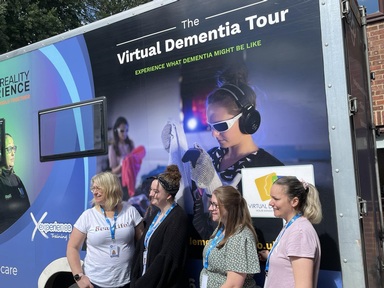Mindfulness therapy reduces chronic pain by 'adopting the perspective of an observer'
Mindfulness therapy has been found to reduce chronic pain and lessen the use of opioids in a large-scale clinical trial.

A total of 250 adults with chronic pain on long-term opioids (medication prescribed by doctors to treat persistent or severe pain) took part in the study by the University of Utah.
The participants were taught to break down the experience of pain or opioid craving into their sensory components, ‘zooming in’ on what they felt and breaking it down into different sensations like heat, tightness or tingling.
They were trained to notice how those experiences change over time and to adopt the perspective of an observer. They were also taught to savour pleasant, and life-affirming experiences, so they enhanced the sense of joy and meaning that can come from positive, everyday events.
In addition they were taught to ‘reframe’ stressful events to find a sense of meaning in the face of adversity, to recognize what can be learned from difficult events and how dealing with those experiences might make a person stronger.
The eight-week mindfulness-based therapy, Mindfulness-Oriented Recovery Enhancement (MORE) succeeded in lessening opioid use and misuse while reducing chronic pain symptoms, with effects lasting as long as nine months.
Eric Garland, lead author of the study, director of the Center on Mindfulness and Integrative Health Intervention Development at the University of Utah, said: “MORE demonstrated one of the most powerful treatment effects I’ve seen.
“There’s nothing else out there that works this well in alleviating pain and curbing opioid misuse.”
He found the effects of the therapy got stronger over time and said: “One possible explanation is that these individuals are integrating the skills they’ve learned through MORE into their everyday lives.”
He also thinks the sustained benefits could be due to the way mindfulness therapy restructures the way the brain processes rewards, helping it shift from ‘valuing drug-related rewards to valuing natural, healthy rewards like a beautiful sunset, the bloom of springtime flowers or the smile on the face of a loved one’.
MORE combines meditation, cognitive-behavioural therapy and principles from positive psychology.
Eric Garland said: “Rather than getting caught up in the pain or craving, we teach people how to step back and observe that experience from the perspective of an objective witness. When they can do that, people begin to recognize that who they truly are is bigger than any one thought or sensation.
"They are not defined by their experiences of pain or craving; their true nature is something more."
The study was published in the peer-reviewed journal JAMA Internal Medicine, with most participants taking oxycodone or hydrocodone, reporting two or more painful conditions and meeting the clinical criteria for major depression. More than half of the participants also had a diagnosable opioid use disorder.
Nine months after the treatment period ended, 45 per cent of participants in the MORE group were no longer misusing opioids, and 36 per cent had cut their opioid use in half or greater.
Latest News
 29-Jul-24
Dementia Bus gives carehome.co.uk staff insight into life with dementia
29-Jul-24
Dementia Bus gives carehome.co.uk staff insight into life with dementia
 27-Jul-23
UK's top home care agencies in 2023 revealed
27-Jul-23
UK's top home care agencies in 2023 revealed
 30-Nov-22
A quarter of older people keep their falls secret from family
30-Nov-22
A quarter of older people keep their falls secret from family
 29-Nov-22
'Covid-19 has not gone away' say terminally ill
29-Nov-22
'Covid-19 has not gone away' say terminally ill
 28-Nov-22
IT consultant who received poor care opens 'compassionate' home care business
28-Nov-22
IT consultant who received poor care opens 'compassionate' home care business